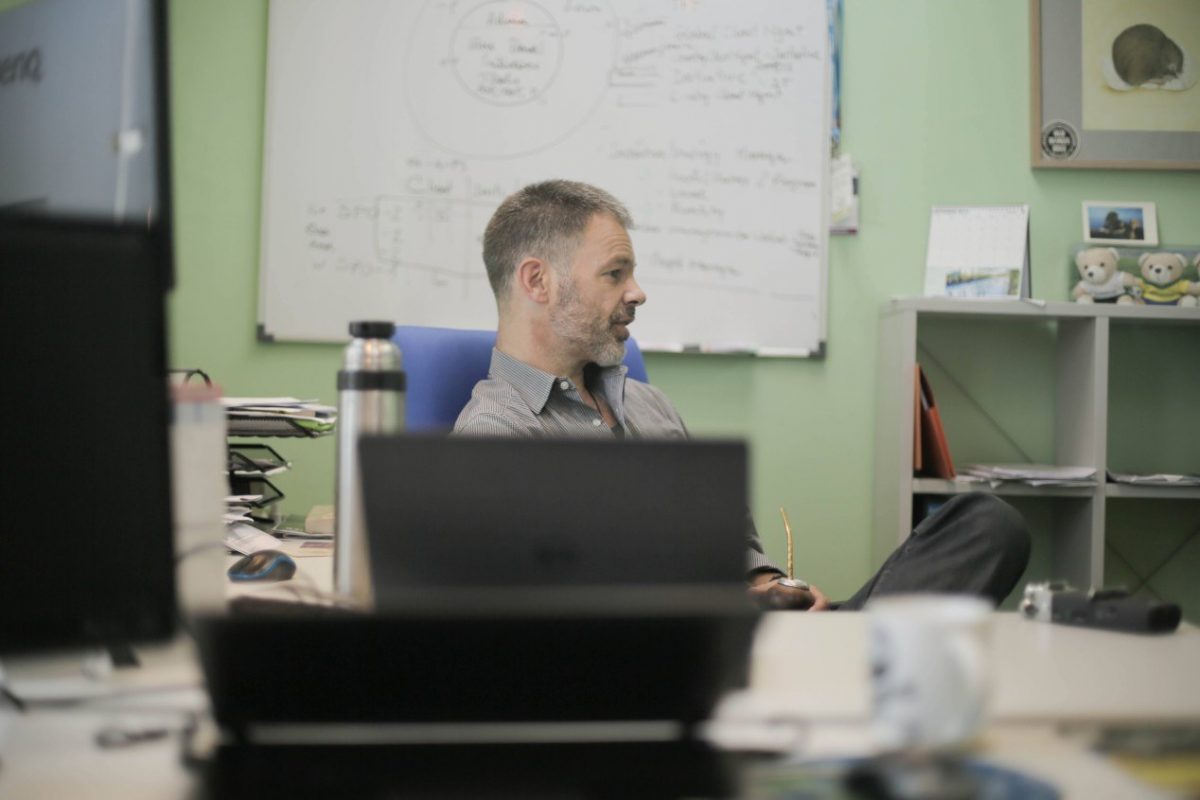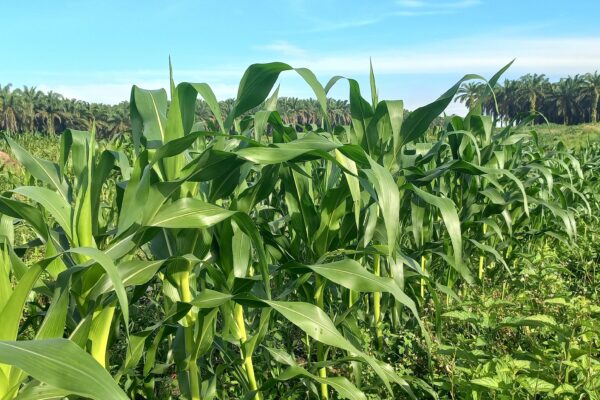Continuing our #PeopleOfPalmOil series, TFT's Rudro Roy spoke to Justin Ford-Robertson about our palm oil work
As of January 2019, The Forest Trust has become Earthworm Foundation
TFT has worked in palm oil since 2010. During this time, there have been a number of challenging discussions about how to tackle issues on the ground and scale up transformation. The basis behind these discussions was the paradox of palm oil. On the one hand, palm oil is highly efficient and supports local economies and our global need for fats and oils. On the other hand, there can be no doubt that palm oil has been linked to instances of rampant deforestation and social exploitation.
Our filmmaker, Florian Wiesner, sat down with TFT’s Heloise d’Huart to learn about this paradox. Watch his interview to find out why boycotting palm oil isn’t the answer to these issues.
From these discussions was born the ART (Aggregator/Refinery Transformation) plan. It started out as a vague concept, with only the end goal in sight. The path was fraught with people telling us we couldn’t do this or that. But over the years, it began to take shape. It was an organic process that developed based on the needs and requirements of the situation and region. This means that, practically, an ART plan in Malaysia may look different from an ART plan in Indonesia.
The basis of the ART plan is to use the purchasing power of palm oil refineries to influence the way palm oil mills and plantations supplying them are managed. To learn more about the bigger picture of our palm oil work and the ART plan, I visited TFT Malaysia’s Justin Ford-Robertson at his office early one Friday morning. The contents of our conversation were edited for clarity and brevity. Special thanks to Florian Wiesner for setting up the photo shoot, to Mark Sanderson for editing out all the awkward pauses and to Rosie Pearce for helping piece our conversation together.
Rudro: To set the context, tell me about the early days when we first started working in palm oil. How did this process, now known as ART, evolve?
Justin: Let’s take a step back and look at the palm oil supply chain. On one end, we’ve got thousands of growers and mills. Growers supply the fruits of the oil palm tree to mills, who then extract crude palm oil from these fruits. The mills supply crude palm oil to a handful of refineries. These refineries process crude palm oil before shipping it around the world to brands that use it in their products.
We saw that these brands wanted assurances that their supply of palm oil was coming from a responsible source. So there was this leverage from brands, as well as a natural pinch point in the supply chain at the refinery level. It left us with an impression of the palm oil supply chain resembling an hourglass.
When TFT started working in palm oil, we were mostly going into individual palm oil mills, finding out what the issues were and trying to figure out how to solve them. But as our work progressed, we realised we may have as many as 1,000 to 2,000 mills supplying to one company.
Given the scale of things, we realised transforming the palm oil industry one mill at a time would take too long. We needed an objective way to accelerate the process. It seemed sensible to choose a sampling strategy that was going to help us identify particular areas of interest. In the beginning, we had a very ambitious set of company policies that we had to try and implement. These policies involved commitments against deforestation, planting on peat and social exploitation, and we had to figure out how to make it work.
I think there are some people who think that we’re following a guide book. Questions pop up like, “Why is it taking so long? Why haven’t we had instant results?” And the concept is really that we’re writing the book as we go and making changes to it along the way. Every step of the way it’s been evolving. Even now, ART continues to evolve. It’s like art, a creative process, but it is also based on some very good scientific principles. And it involves relationships; it involves processes; it involves learning as you’re going.
Rudro: So, essentially, what is ART?
Justin: Well, it’s a process of transformation; a framework to help mills and others within the supply chain take ownership of their problems and move towards more responsible sourcing. It allows us to work with growers, mills, and refineries; to find out what the issues are on the ground, and what the solutions could be. Practically, there are five broad steps in an ART plan – traceability (mill mapping), the Mill Prioritisation Process (MPP), Deep Level Engagements, Broad Level Engagements and the final Verification step.
We’re not intending to find every single issue. It’s not meant to be an all-encompassing audit. It’s about going in there and trying to find as much as we can, based on a collaborative and helpful approach. Because we don’t want people to hide things, and we believe that it is fair for companies to have the opportunity to address their own issues. It’s a little bit like how Bastien (our CEO) talks about a doctor – if you go to a doctor and the doctor finds a tumour, it’s not his or her job to tell everyone that you’ve got a tumour. It is your right as a patient to deal with the tumour as you see fit. I think that’s quite a useful analogy into the approach we’re taking.
Rudro: What’s the biggest challenge working to improve palm oil practices?
Justin: Some people still believe the answer is to boycott palm oil and replace it with something else. I have no idea what they’re going to use instead, because it is so much more productive than any other oil crop. If you closed down the palm oil industry tomorrow, you would need several times the area of other crops to replace the palm oil. I’m a forester, so I may be biased. But a perennial crop like oil palm may be much less damaging than other monocultures which have perhaps got genetically modified crops. Any crop is going to have downsides. What we’re trying to achieve, I think, is to answer the question – how do we move forward? We have to understand that if the global fats and oils consumption continues to grow as it is, how will we meet that demand? And if we’re going to meet that demand, how can we ensure that whatever meets that demand also meets the social and environmental criteria, and the values that most people on the planet share?
Rudro: On the other hand, what are the positives you’ve seen while working in the palm oil space?
Justin: There has been a good amount of collaboration in trying to help change happen. On the commercial side, clearly many companies are still fierce competitors. But on the change side, in terms of supporting the industry, they do all seem to be working in the same direction. So in terms of training sessions, for example, many are now saying, “We would like to do some training on a particular aspect of social or environmental issues in this region, and anyone can come. Whether you’re in our supply chain or not, we want the industry across the board to adopt these changes, and we want to support that change.”
That type of collaboration within the industry is fantastic, and I think they’re also working much closer with communities and governments. By doing that and demonstrating that they’re willing to support the growth and development of these regions, it is a really good sign that change is happening.
But we (TFT) don’t have the ability to solve everything alone. The issues are just too big for us alone. And we don’t strive to do that. We want to collaborate, we want to work with other people, we want to try and link brands to growers and producers, we want to bring the parties together and that inevitably means that we have to hold hands with other organisations and try to make that happen effectively.

Rudro: One last thing, tell us a bit about yourself.
Justin: That was in my first blog! I’m a simple forester. I decided that I wanted to play rugby for the All-Blacks (New Zealand national team) when I was eight years old. And some of my All-Black heroes were in the forestry industry in New Zealand. So, as an eight-year-old I was already doing lateral thinking – I thought if I became a forester, my chances of becoming an All-Black were probably going to be quite high! Effectively, I never found anything else I thought I wanted to do any more. I liked the idea of being out with nature. My grandfather was a forester in India, and he told me that foresters are kind of unique. Because not only do they have to think in terms of decades, but probably centuries. For forest management, they also have to think about multiple disciplines. Most of my interest was in native forestry in New Zealand, and then I did some work on renewable energy, land use and energy planning, implementation of strategies – those are the sorts of things that I’ve been doing for the last few decades.
Rudro: Cool! I think that’s it. Thank you so much.
Justin: No worries.
What struck me about this conversation is that change doesn’t happen in a day. It’s not easy either. It requires time, effort and two components that are key to any ART plan – communication and collaboration. I also learnt that ART involves spreading responsibility up the supply chain based on pre-existing relationships – from refineries to mills, and from mills to the plantations and growers.
This is not to discount the fact that issues such as deforestation and exploitation still pervade our world. But simply pointing out the doom and gloom helps no one. Rather, it can lead to hopelessness, paralysis and a fear that nothing we do is ever going to change things. But that can’t be true either. Our actions matter. And even the smallest sliver of hope can lead to action and change. Hope – not based on blind faith, but based on the truth.
The next few episodes will explain the steps in an ART plan, as seen from a Malaysian perspective – traceability (mill mapping), the Mill Prioritisation Process (MPP), Deep Level Engagements, Broad Level engagements and Verification. If you would like a more thorough overview of the processes within an ART plan, watch this long-form interview with Justin.
